Textiles are often overlooked for the role they play in everyday life. Specially chosen fabrics make up everything in our lives, from our clothes to our couches to towels. The purpose of an item has a tremendous bearing on what fabric it can be made from.
How to Pick the Right Fabric for Your Project
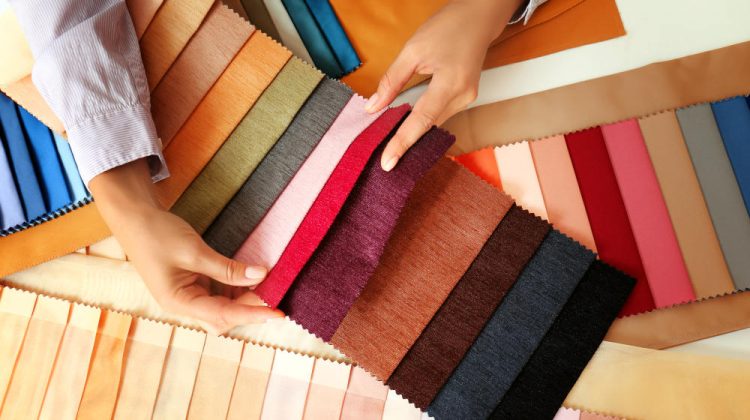
There are many factors to consider when choosing a clothing fabric: durability, resource abundance, comfort, longevity, production cost, purpose, and more.
The type of fabric can have a tremendous influence on the outcome of the product. Light linen would work wonderfully for a flowy summer dress, but wool is better suited to a warm winter coat. A jersey knit is excellent for a soft, stretchy t-shirt, but lycra makes for a better swimsuit as it dries quickly and won’t sag when wet.
When choosing a fabric, consider natural vs. synthetic, non-woven vs. woven vs. knitted, and piece dyed vs. yarn-dyed vs. woven in vs. printed.
Natural vs. Synthetic
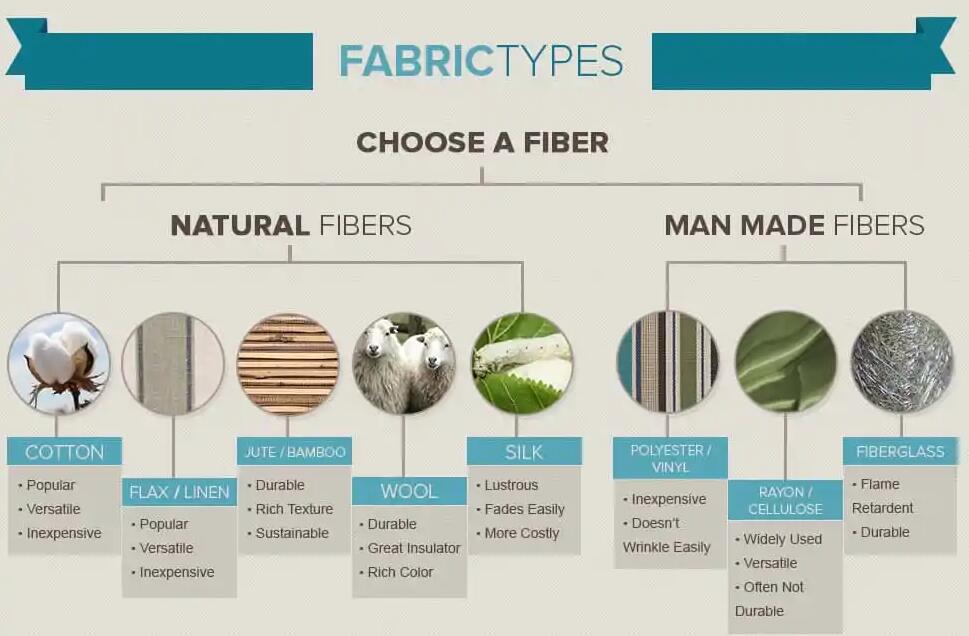
Natural fibers are anything made from plants or animals, like cotton and wool. Natural fibers tend to lend better heat control and airflow to a garment. Natural fibers absorb water well but can be environmentally taxing to make.
Synthetic or manmade fibers are chemical-based compounds like nylon and acrylic. They are usually a form of plastic and therefore trap heat and reduce airflow. Synthetic fibers are water-resistant to some degree and more stain-resistant than natural fibers. They are also much cheaper to make.
Natural and synthetic fibers can also be used in combination to make blends – thin, stretchy jeans are both cotton and spandex.
Woven vs. Knitted
While there are many ways to create fabric, the standard two are weave and knit.
Woven fabrics consist of vertical and horizontal strands called the warp and weft. In a loom, the warp is the stationary vertical threads, and the weft is the horizontal threads that pass through.
Woven fabrics don’t stretch unless they employ an elastic thread. They are resilient but can unravel if cut edges are left raw – think denim.
Knitted fabrics interlock with knit and purl stitches. They are flexible and have give to their shape but do not unravel when cut or left raw.
The Different Types of Fabrics
Canvas
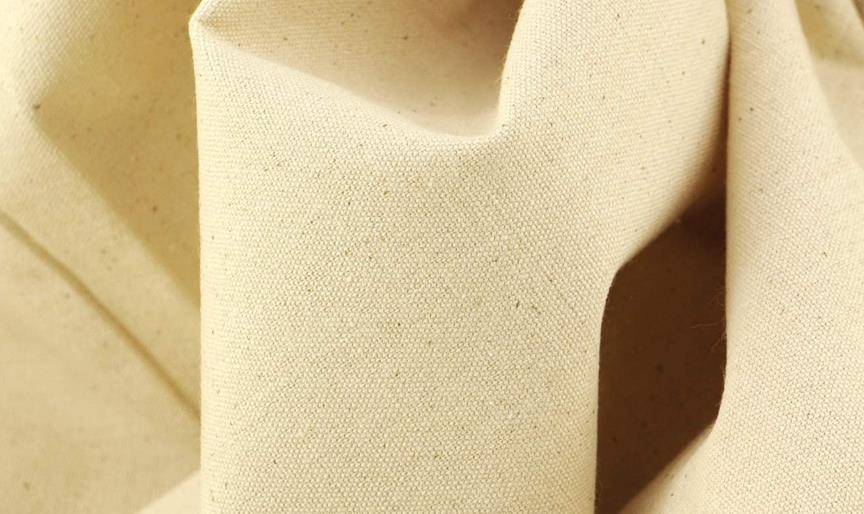
Canvas is a woven fabric, most often made of cotton or linen. It is quite heavy and very durable, good for sails and artist canvases. It is not generally used for clothing because it is too stiff and thick but can be used as a protective layer like a smock.
Blended with synthetic fibers, canvas fabric becomes water-resistant and is perfect for outdoor purposes like camping tents. The most common clothing items that use canvas are backpacks and shoes.
Cashmere
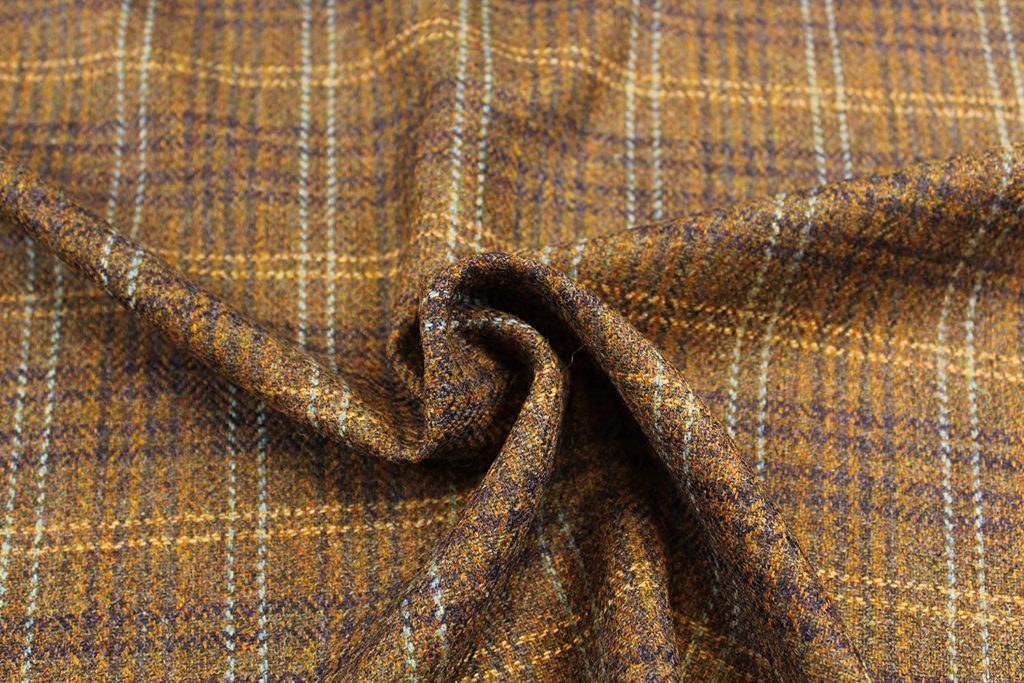
Cashmere is a soft yarn that can be woven or knitted made from wool. The softness of cashmere is due to the type of wool. It is sourced from cashmere goats, pashmina goats, and sometimes angora goats, alpacas, and camels.
Cashmere is expensive as the production is very labor-intensive. Fibers are hand-selected from the molted coats of goats. These fibers are spun into fine and silky threads. Cashmere is most often used to make sweaters and luxury items.
Chenille
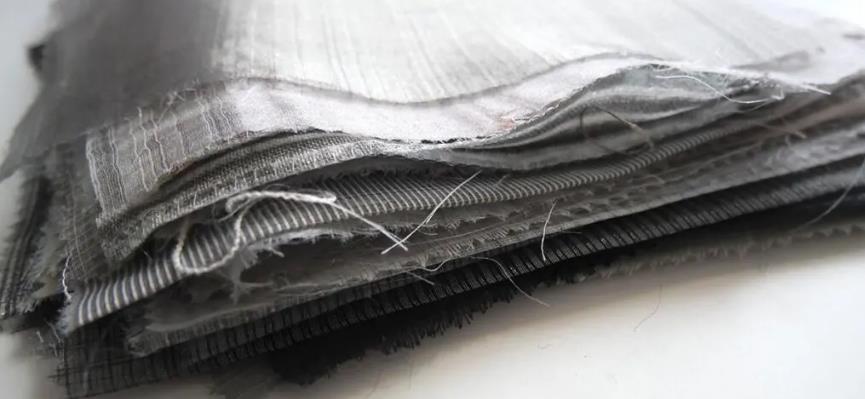
Chenille is another soft fabric often used for bedding and upholstery. It is a woven fabric and can be cotton, wool, silk, or rayon. The defining characteristic of chenille is the fluffy, plied tufts on its surface.
Chenille can vary in look depending on the spinning technique and weaving style used. Sweaters are the most common chenille clothing.
Chiffon
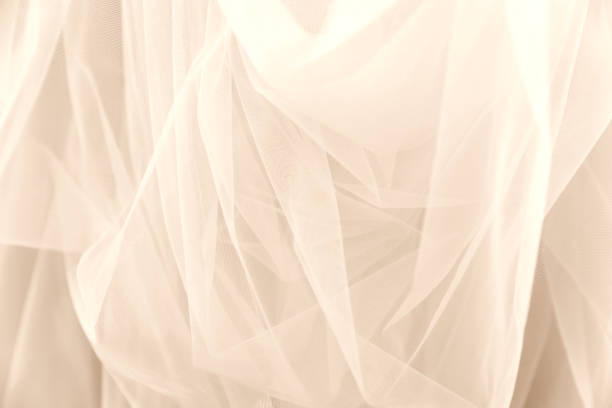
Chiffon is a woven, gossamer fabric. It is light and airy, transparent, and often shimmery. Originally, silk was used to make chiffon. Polyester is the most common fiber used for chiffon today because it is the most affordable and fastest to make, but many different fibers work just as well.
Chiffon is a small, tightly woven mesh formation, not to be confused with tulle or organza. Using chiffon as an overlayer on clothes can add a floaty aspect and volume, most commonly found in skirts and dresses.
Cotton
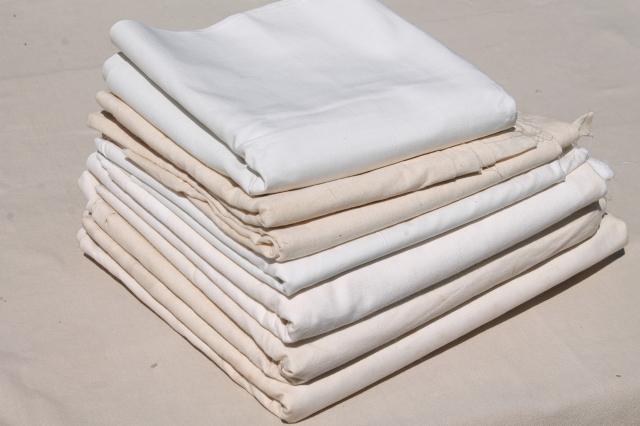
Cotton is a plant-derived fiber. At a molecular level, cotton is almost entirely cellulose – the structure that makes up the cell walls of plants.
Cotton is one of the most common fibers in fabrics. It can be woven or knitted, used alone, or blended. It is a key component in denim, flannel, and damask.
Because it is a natural fiber, cotton is excellent for both winter and summer clothing. It is durable and of medium stiffness and weight.
Damask
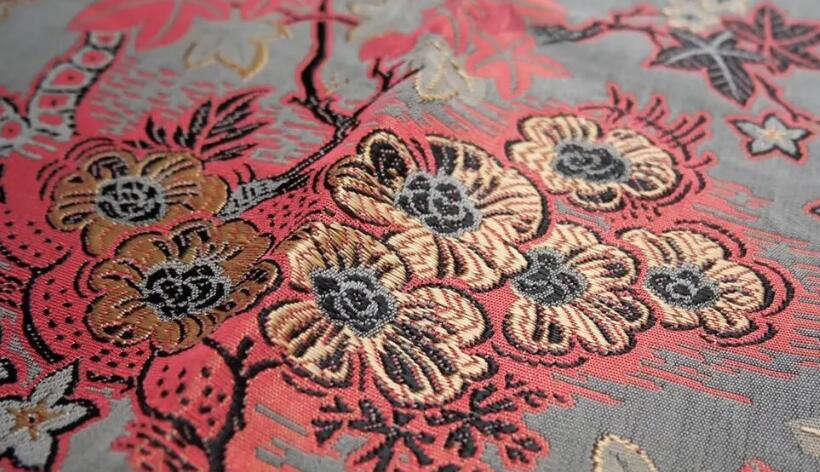
Damask is a special type of weave made on a jacquard loom. It usually has a base of cotton and contrast threads of satin, sateen, or twill for the pattern. The different threads give the pattern a specific luster. The fabric is reversible and has inverted colors on each side.
Damask is a sturdy fabric that works well as a table cloth or napkins. It is not used much for clothing in the modern age but was a stable of regal jackets and gowns.
Damask is complex and takes time to make. It is expensive and a symbol of luxury.
Georgette
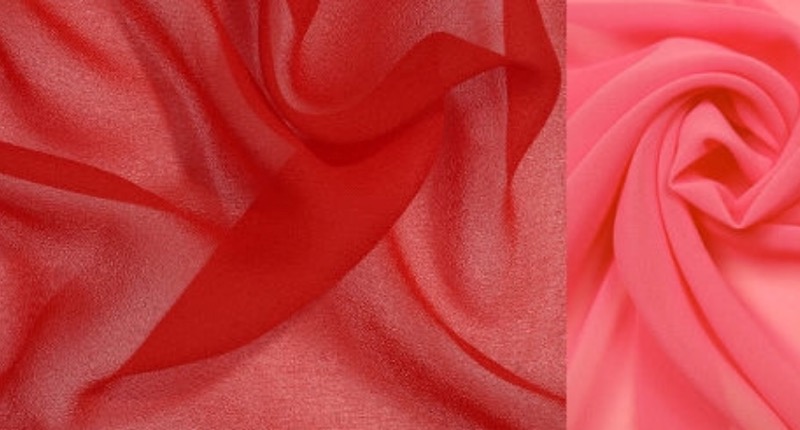
Georgette fabric is a crêpe fabric, meaning it has a bumpy, textured surface. It is traditionally a silk weave but can be viscose, rayon, or polyester for more affordable options.
Georgette’s drape is revered. The way it hangs and moves makes it ideal for dresses. Georgette is often used as an overlayer as it is also translucent.
The bumpy effect present in the fabric is a result of the yarn being tightly twisted. Even when made of silk, georgette is not a very shiny fabric.
Gingham
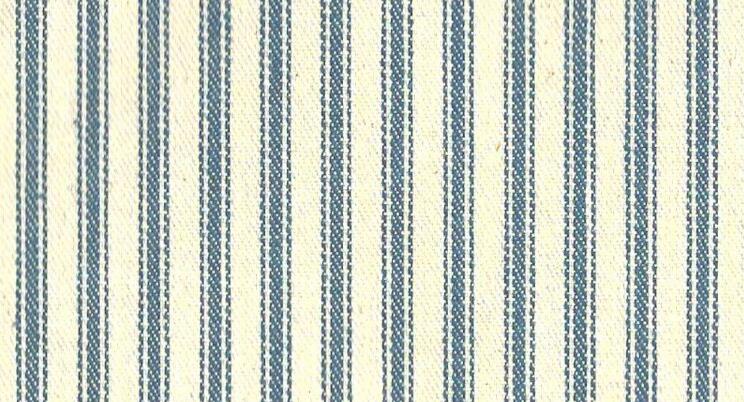
Though gingham is commonly thought of today as any fabric with striped checks like Dorothy’s dress in The Wizard of Oz, the name refers to the dying process. Notably, gingham is yarn-dyed. That is what defines it as such. The yarn is dyed in contrasting colors before being woven into fabric.
Traditionally gingham is entirely cotton but is often blended with synthetic fibers in modern clothing. Many people recognize gingham as a casual button-up shirt pattern.
Jersey
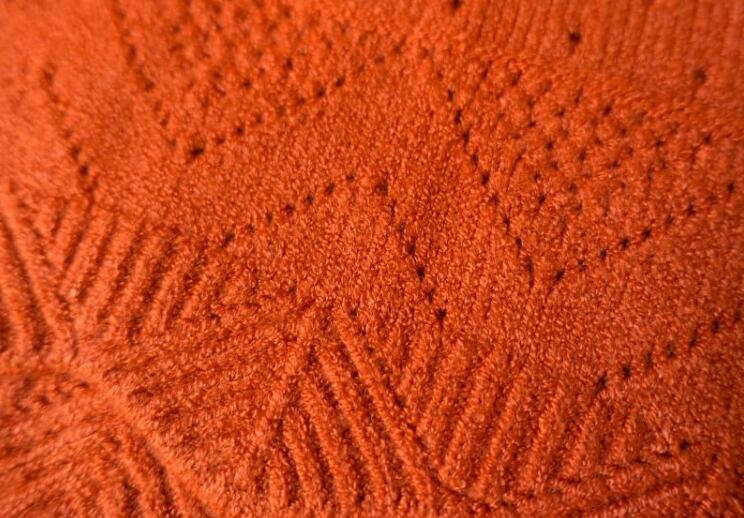
Jersey fabric consists of single-knit cotton. It is soft, stretchy, and will not fray. Jersey knits are most often used for clothing items such as t-shirts. It is because of the knit that jersey fabric rolls up when cut along the weft.
Jersey is commonly used for clothing but can also be practical for items like sheets. It does not wrinkle due to its stretchy quality. The stretch is a result of the knit, not elastic thread.
Leather
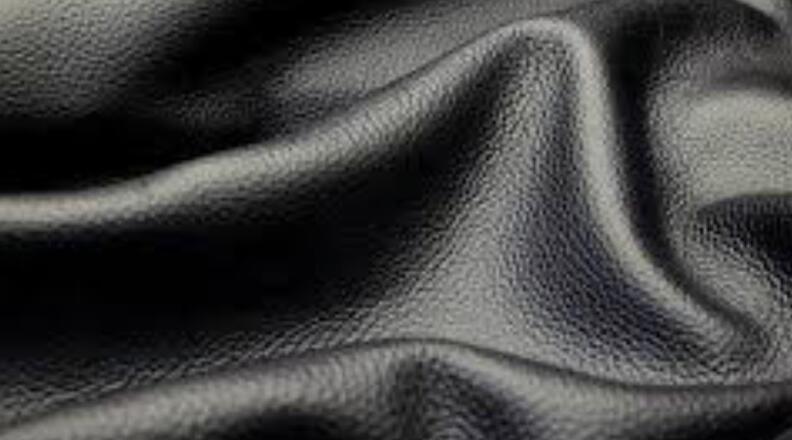
Leather is a non-woven fabric made from animal hides. It is very durable, wrinkle-resistant, and water-resistant when treated. Leather is made from flattened and treated pelts. It is cut out in pieces rather than knit or woven.
There are many leather goods. Car seats, belts, jackets, boots, purses, and couches are just a few examples. Leather is a good protector against road burn and injury when used as clothing. Leather gloves can prevent knife cuts.
Leather can be smooth or retain the hair of the animal. Cow print leather is a hide that has not been stripped of the hair.
Linen
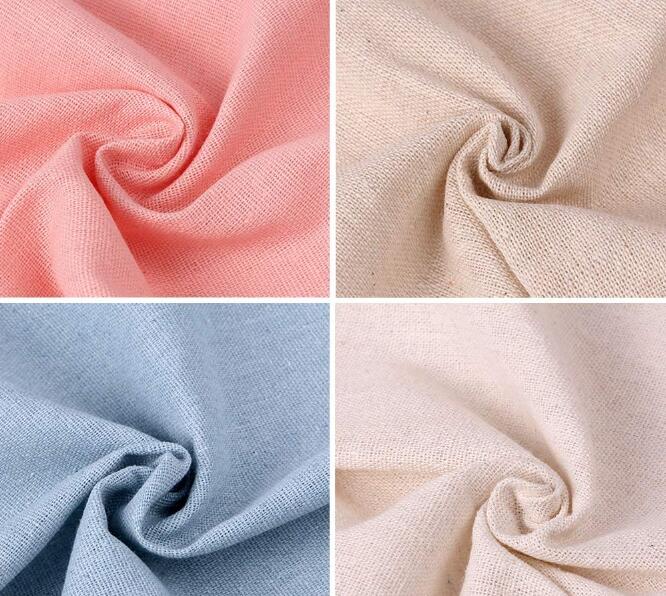
Linen is a plant-based fiber derived from flax. It is the most durable natural fiber, even more, durable than cotton.
Linen can be rough and thick or thin and soft. It’s uses range from table cloths and bedsheets to summer dresses and pants. Linen is one of the best all-around fibers.
Linen can be used on its own or in a blend. It can be woven or knitted. Linen takes more time and effort to make than cotton.
Flannel
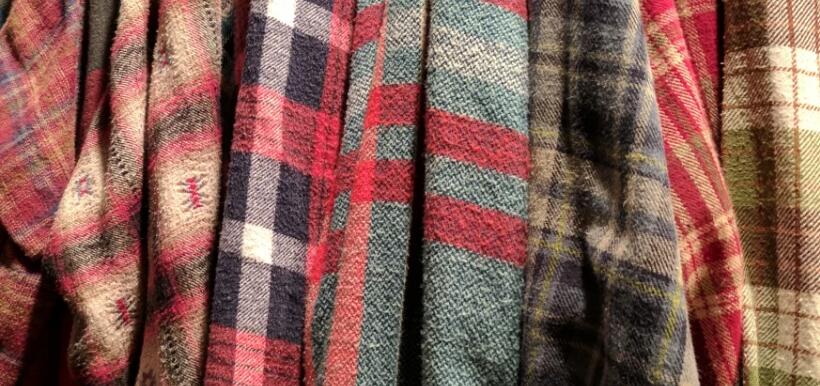
Flannel is brushed woven cotton. The brushing creates a nap, or a fuzzy surface on one or both sides that has direction. The nap can also be a result of a loose weave.
Flannel is used primarily for thermal clothing. It varies in thickness and fuzziness and makes for comfortable pajamas, bedding, blankets, socks, and coats.
Plaid flannel is a common staple of clothing and is often associated with Canada, though it probably originated in Wales.
Looped
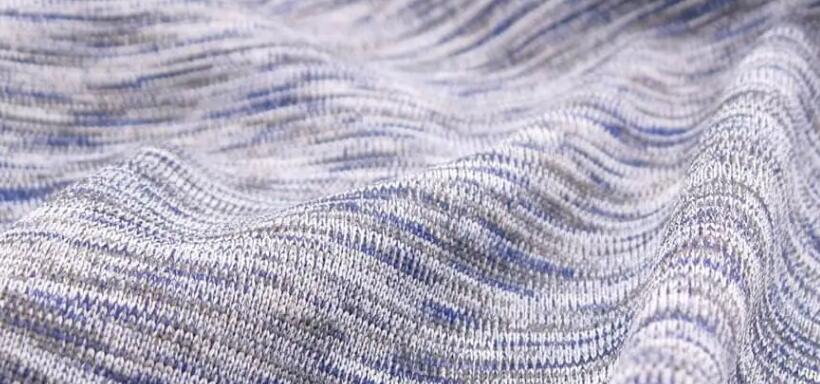
Looping fabric is a way to make a knit that uses small loops to add volume, softness, and warmth. Any fiber that can be knitted can also be looped.
Looped fabric has a similar feel to soft flannel. It is commonly seen on cardigans and hats. Because the fabric is knitted, it also tends to be stretchy.
Looping is often done uniformly but doesn’t have to be depending on the desired effect.
Crêpe
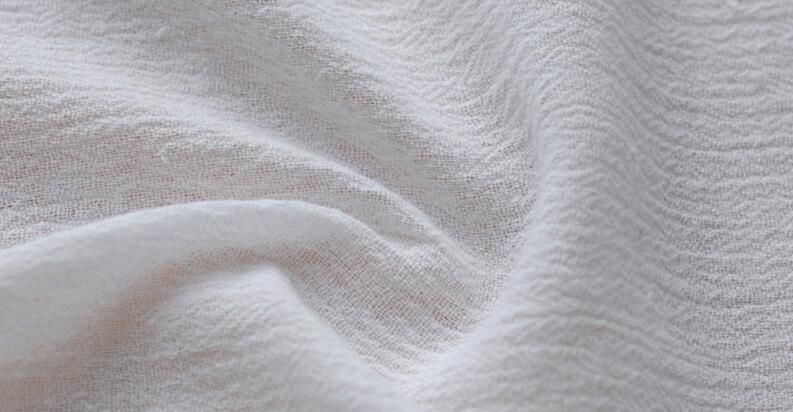
Crêpe fabric is most often made of silk, wool, or synthetic fiber. It can be knitted or woven and uses a tightly twisted yarn that gives the fabric a bumpy and uneven texture.
Crêpe fabric is a popular fashion fabric for draping and looks lovely in dresses, skirts, and anything with flow. It is soft and thin, sometimes translucent.
Most crêpe fabric ends up as clothing like blouses, but it is also a popular choice for curtains and home décor.
Satin
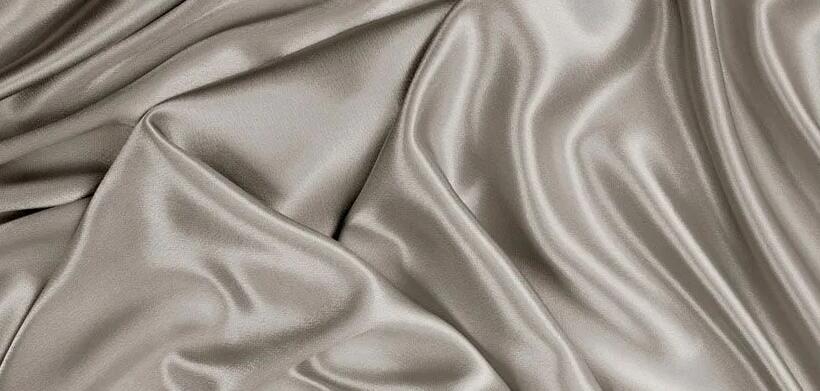
Satin is a specific weave of silk, nylon, or polyester that results in a shimmery surface on one side and a duller surface on the other. Satin weaves are lightweight, slippery, shiny, and have a nice drape.
Satin is lustrous and expensive-looking but can also appear tacky. It is common to see it at weddings, in lingerie stores, and in home décor departments. Satin can be used for any type of clothing, from long dresses to underwear.
Silk
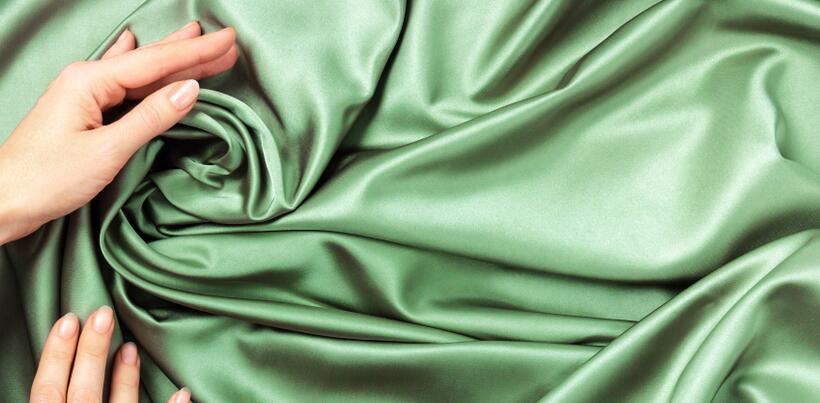
Silk is a natural fiber made from the silk threads that caterpillars spin. The lustrous look of silk is thanks to the proteins in the silk fiber. Raw silk is not shiny because of the short, leftover fibers that make it up. It is the long fibers, proteins, and satin weave that give silk its iconic look.
There are four main types of silk fabrics: muga, mulberry, tasar, and eri.
Wool
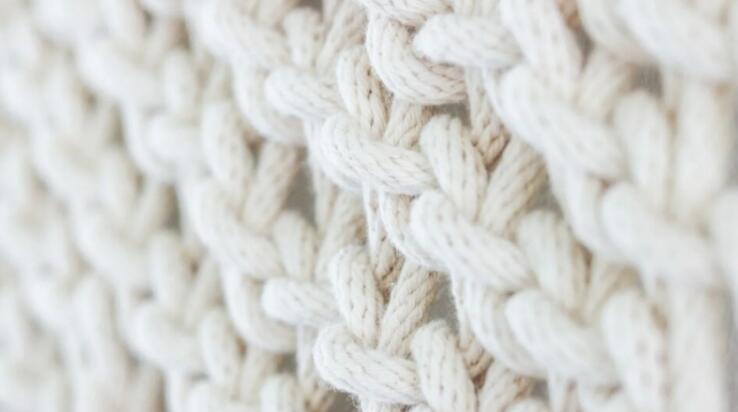
Wool is a natural fiber most commonly made from a sheep’s coat, but any hair from any animal can be used. Wool is most often knit from spun yarn but can be woven as well. It can be used on its own or in combination with other wools and fibers.
Wool is excellent for cold weather clothing as it keeps heat in even when wet. Certain types of wool are softer than others and, depending on the animal they come from, can have vastly different prices.
Velvet
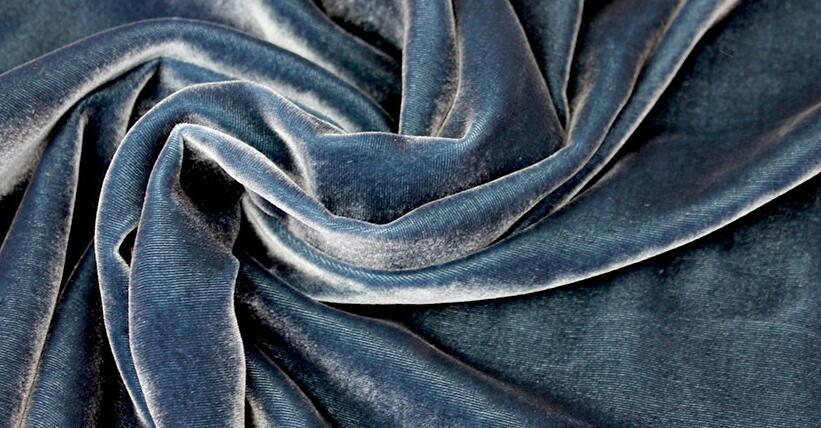
Originally, velvet was silk, but that is very rare nowadays. Most velvet is synthetic, made from rayon, polyester, nylon, or viscose, but there are also natural variants like cotton.
The iconic texture of velvet is thanks to the notably dense weave and short, even pile. Clothing, upholstery, and more can be velvet.
Wrapping Up
To summarize, the type of fabric an item uses is vital to the functionality of said item. Well-made clothing will always use the textile most suited to the garment. Being familiar with the different fabrics will ensure that you will know which is best for the job.
